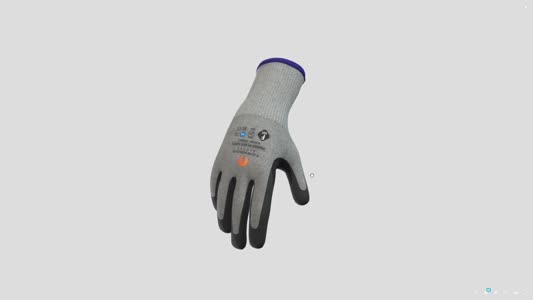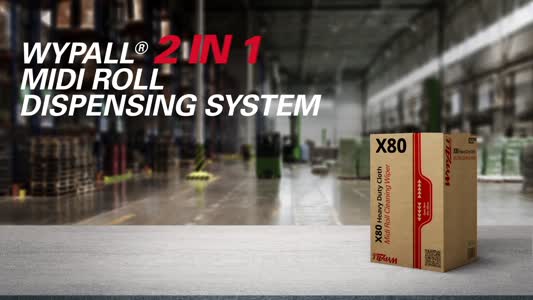
 |
Mark Sennett
Managing Editor |
 |
Kelly Rose
Editor |
| Home> | Industry Update | >Company News | >Weathering the storm |
| Home> | Managing Health & Safety | >Environmental Monitoring | >Weathering the storm |
Weathering the storm
20 October 2025
IT'S STORM season and time to brace for rain, floods and high winds. To keep work moving on-site, it’s time to start planning now and getting the right tools in your inventory can make all the difference when conditions turn says Darren Binns.

Ashley, Bert, Connal and Darragh; the 2024/25 storm season brought six named storms in total, leaving a trail of power outages, flooding and high winds across the UK. As another unsettled season begins, construction sites once again face serious disruption. From waterlogged ground to flying debris, extreme weather can stop work, damage infrastructure and put lives at risk.
Between October and March, storms arrive with frequency and intensity andcan quickly undermine safety. Health and Safety Managers on-site need a storm readiness plan that covers three stages: preparation before a weather event, protection during it and rapid recovery afterwards. The right tools andkey equipment will support all three phases, helping teams stay operational and safe when the weather does its worst.
Before the storm
Preparation starts long before the rain falls. Site managers should walk their sites to check drainage routes, secure scaffolding, anchor fencing and remove loose materials. Clear communication channels are just as important, andeveryone should know who makes the call to shut down operations and when.
According to the HSE, while no minimum temperature is set for outdoor work, employers must assess risks and provide adequate protection against the elements. This means ensuring workers have access to heating, suitable clothing, take regular breaks and can use mobile facilities for warming up with soup or hot drinks available.
On the equipment side, portable power and reliable lighting are the foundation of any storm-readiness plan and generators are fundamental. Jefferson Tools’7.9kVA Petrol Generator (Electric Start) provides essential backup when mains power fails. With a 14HP MacGen petrol engine and automatic voltage regulation, it delivers steady output for up to 10 hours, enough to run pumps, heaters, lighting and communication systems.
Visibility is another safety priority. Compact, rechargeable lights ensure crews can navigate safely when the grid is down. Jefferson Tools’ HyperBeam 1400 Lumens Scope Light is a high-intensity torch that runs via USB-C chargingwhile the 350 Lumens COB + 90 Lumens LED Headlamp provides hands-free illumination for inspections and repairs. It’s impact resistant and offers multiple lighting modes, including an SOS function for emergencies.
During the storm
When storms hit, speed and control are everything. Water accumulation on site poses one of the biggest risks, not just to work areas but to electrical systems and structural stability. Quick water removal can prevent further damage and get operations back online faster.
Jefferson Tools’ Petrol Water Pump is built for heavy-duty floodwater removal. Its self-priming design and 3.6-litre tank allow continuous use during severe flooding. Powered by a four-stroke OHV engine, it’s suited to larger-scale outdoor drainage where mains power isn’t available. For smaller or enclosed areas, such as basements or garages, the Industrial 500W Submersible Electric Pump offers a compact alternative. With a 12,600 L/hr flow rate, it handles depths up to 5m and solids up to 7mm, ideal for dirty water and confined spaces. Its IP68 waterproof rating and 10m power cable make it safe and flexible in wet environments.
Health and safety managers should also consider the risks of high winds and unstable structures. Work at height must be avoided in gusty weather and when winds exceed 23 mph (Force 5) as this can affect balance and dramatically increase the likelihood of falls. Scaffolding should be secured and adequately tied, with additional supports provided where necessary. Once a storm has passed, all scaffolding and temporary structures must be inspected by a competent person before being used again. Excavations and partially completed structures should also be checked for strength and stability before work resumes.
After the storm
Once the floodwaters retreat, the focus shifts to restoration. Damp materials, debris and surface water can create slip hazards, corrosion and long-term structural issues if left untreated. Quickly drying and dehumidifying the workspace also helps prevent secondary damage and mould growth.
The 20″ High Velocity Floor Fan (230V) is one of Jefferson Tools’ most versatile pieces of kit for this stage. With a 510 mm fan diameter and three speed settings, it accelerates airflow across floors and walls, promoting faster drying. For additional warmth, the 2800W PTC Industrial Electric Fan Heater provides two heat settings (1900 W and 2800 W) and a fan-only mode, making it useful both for heating and air circulation in damp spaces. Its self-resetting thermostat also means it is safe when left unattended.
Cleanup also demands equipment built to cope with heavy debris and water. The 90L Wet & Dry Industrial Vacuum Cleaner is a powerful all-rounder, handling both liquid and solid waste with its 2000W motor and 250 bar suction. The large tank capacity means fewer interruptions, allowing teams to clear large areas efficiently.
Forward planning
Every storm should leave lessons behind. Post-event reviews help managers refine risk assessments, replace overworked equipment and update training. Preventative maintenance, backed by a well-stocked inventory of reliable tools, is far more cost-effective than emergency callouts and downtime. From backup power to lighting, heating and cleanup, the right equipment keeps people safe, protects assets and gets operations moving again whatever the forecast brings.
- No related articles listed























